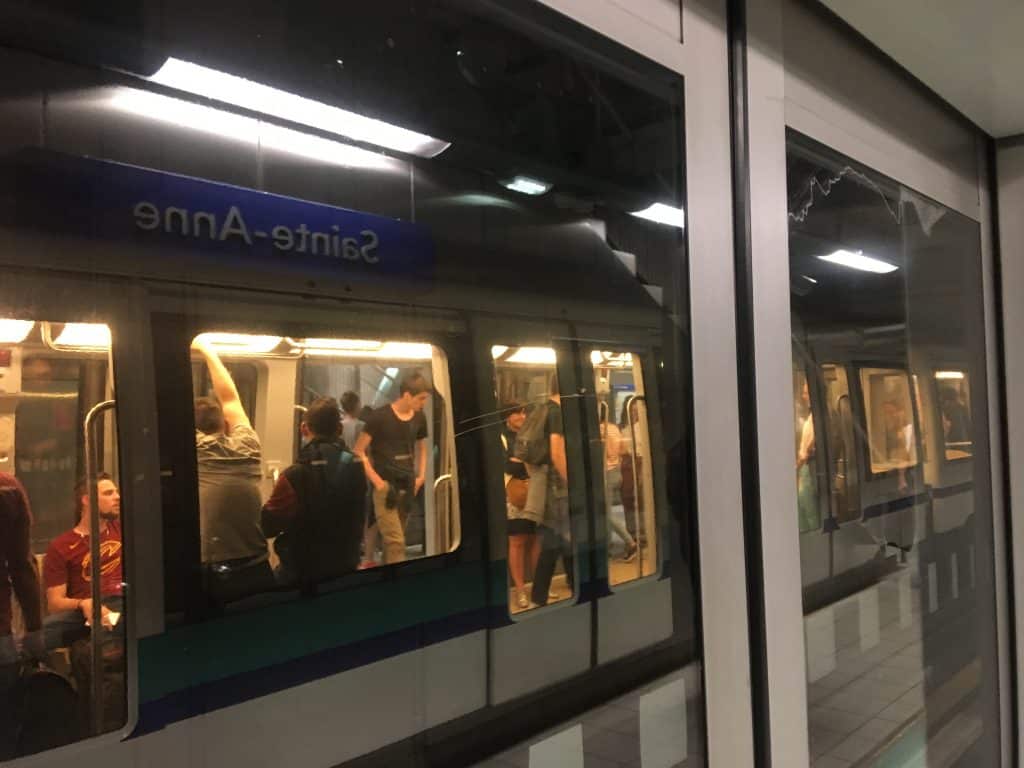Since September 20, users of the Rennes metro have been able to enjoy mobile broadband access in all fifteen stations and tunnels on line b.
As a neutral infrastructure operator and network installer, TDF has deployed a shared antenna system on both lines of the Rennes metro, to which the four cell phone operators - Bouygues Telecom, Free, Orange and SFR - are connected. This project was carried out by TDF in partnership with Rennes Métropole, which drew on TDF's know-how to design and deploy a technical solution that was validated by the four mobile operators.
A "shared" system
Pooling the antenna system between the four operators minimizes the environmental footprint in the metro and optimizes deployment costs.
The mobile operators' equipment is hosted at TDF's BTS Hôtel in Cesson-Sévigné. This shared hosting, known as "BTS Hôtel", reduces the need to install technical racks in the confined environment of the metro, and simplifies access to equipment. Based on the Cesson-Sévigné site, TDF teams are thus able to maintain the equipment as close as possible. In addition, thanks to its national supervision center, TDF supervises the antenna system 24/7, in close liaison with the mobile operators.
A project that meets technical and technological challenges
The very high-speed mobile connectivity of the metro was taken into account from the earliest stages of the line b project. In particular, the engineering teams integrated the line's radio guidance system into their design to ensure compatibility between the various radio systems. The stations, spaced further apart (an average of 850 m between each station, compared with 570 m on line a), required special adjustments and adjustments. To ensure continuous mobile coverage, twenty-two repeaters totalling 124 antennas were installed in the line's stations and tunnels. Operators are now providing a high-quality 4G service that can be upgraded to 5G.
In a year of actual work (twenty-four months taking into account the periods of restriction linked to the pandemic), TDF finalized the installation of the shared antenna system relaying the networks of Bouygues Télécom, Free, Orange and SFR.
Developing indoor coverage
The antenna system is based on indoor technology known as DAS (distributed antenna system), which enables TDF to bring cell phone operators' mobile coverage to confined indoor spaces such as tunnels, subways, office buildings, shopping malls, railway stations and so on.
Improving mobile coverage in these living spaces represents a real challenge for both owners and mobile operators. The exponential growth in mobile data consumption makes it necessary to deploy these specific technical solutions.
A partnership for digital development in the metro
The mobile coverage project in the Rennes metro began in January 2017 when TDF and Rennes Métropole signed a public domain occupation agreement authorizing TDF to carry out the technical design and deployment of the antenna system to ensure very high-speed mobile coverage of the Rennes metro, by cell phone operators, for both metro lines.
Olivier Huart, Chairman and CEO of TDF said:
"TDF is proud to fully play its role as a digital developer and to contribute, together with Rennes Métropole and the four operators, to the development of connectivity in the Rennes metro. Established in Rennes for several decades as a recognized industrial operator, TDF is thus putting its technological expertise at the service of operators responding to the exponential growth in connectivity needs".
Fabrice Levillain, Director of Bouygues Telecom's Grand Ouest network, said:
"Bouygues Telecom's mission is to enable French people to take full advantage of their connection, whenever and wherever they are. We're delighted to be able to offer our Rennes customers on line b access to very high-speed mobile broadband in stations, tunnels and on trains.
Thomas Reynaud, CEO of Groupe iliad (Free's parent company), comments:
"We're delighted to be able to offer - at last - our subscribers in Rennes high-quality mobile access on line B. We would like to thank all the public and industrial players who have made this breakthrough possible. We believe that improving indoor coverage by the four mobile operators is an important issue for the coming years. Coverage of the Rennes metro is a big step in the right direction.
Jean-Marc Escalettes, Director of Orange Grand Ouest said:
"Continuing our partnership that has enabled us to be present on line a since 2018, we are very proud to announce that our network is accessible on line b, from the opening, to all our customers. We continue to work in this way to accompany them every day in their connectivity needs on the occasion of their travels."
Franck Coudrieau, Regional Delegate West for Altice France - SFR, comments:
"Rennes regularly tops the rankings of France's most attractive cities, and its dynamic economy attracts individuals and businesses alike. There is a strong need for connectivity, and the people of Rennes naturally express a strong desire to benefit from fast, fluid connections, including when travelling by metro. With this partnership alongside TDF in the construction of the second line of the Rennes metro, SFR is providing further proof of the total priority it gives to investment in its networks, and thus confirms its determination to accompany its customers in their digital revolution to offer the best services and uses of tomorrow."
Key project figures and data
15 metro stations, including 12 in tunnels
124 antennas installed
More than 100 km of optical fiber between stations and the TDF center in Cesson Sévigné (13.6 km from the furthest station)
More than 30 people worked on this project
TDF and the operators' installations were completed and operational by 2021. This meant that technicians from all the other companies working on the site were able to benefit from 4G ahead of schedule and during the works.
Download the press release

